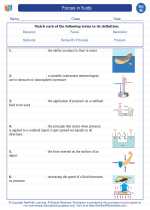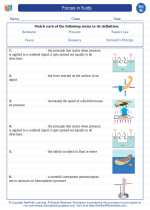Metallic Bonds
Metals are made up of closely packed atoms. The outermost electrons of these atoms are not held tightly by the nucleus and are free to move within the structure of the metal. This gives rise to a unique type of chemical bonding known as metallic bonding.
Key Features of Metallic Bonds
- Electron Sea: In a metallic bond, the outer electrons of metal atoms are delocalized and form a "sea" of electrons that move freely throughout the metal structure.
- Attraction between Cations and Electrons: The positively charged metal ions are held together by the attraction between the cations and the delocalized electrons.
- Physical Properties: Metallic bonds contribute to the high electrical and thermal conductivity, malleability, and ductility of metals.
Study Guide for Metallic Bonds
To understand metallic bonding, consider the following key points:
- Describe the arrangement of atoms in a metal and the behavior of their outer electrons.
- Explain how the delocalized electrons contribute to the properties of metals, such as electrical conductivity and malleability.
- Compare metallic bonding with other types of chemical bonding, such as ionic and covalent bonding.
- Discuss the role of metallic bonding in the properties of specific metals, such as copper, iron, and aluminum.
- Explore real-world applications of metallic bonding, such as in the manufacturing of electrical wires and structural materials.
Understanding metallic bonding is essential in comprehending the behavior and properties of metals, and its applications span various fields, including materials science, engineering, and chemistry.






